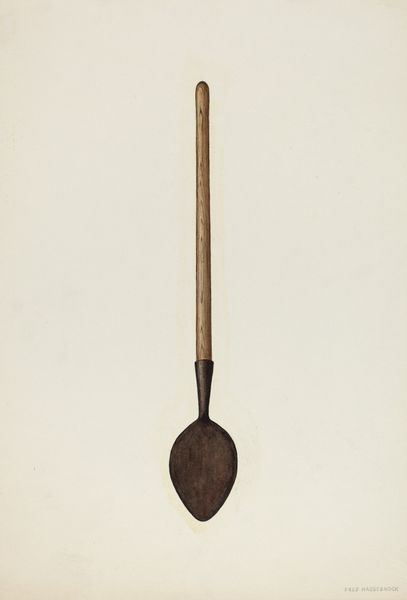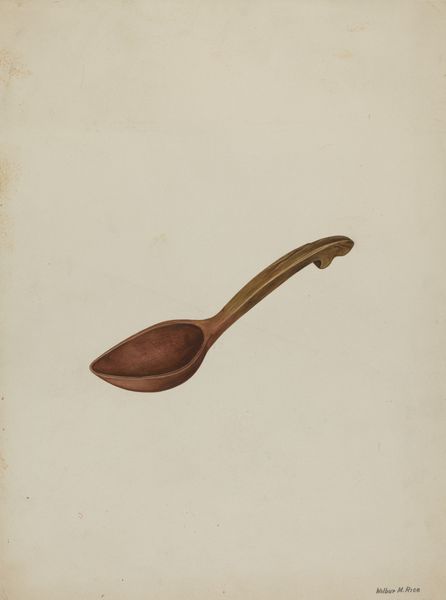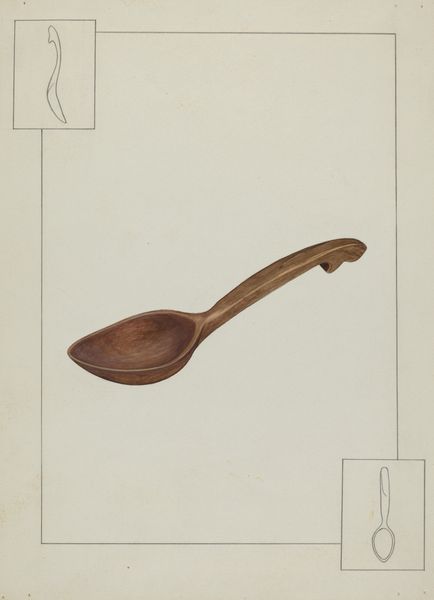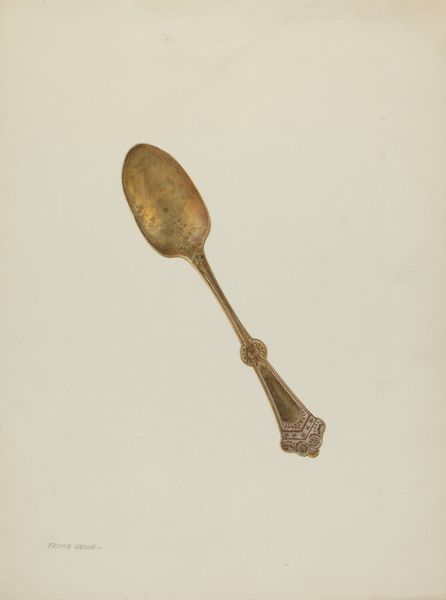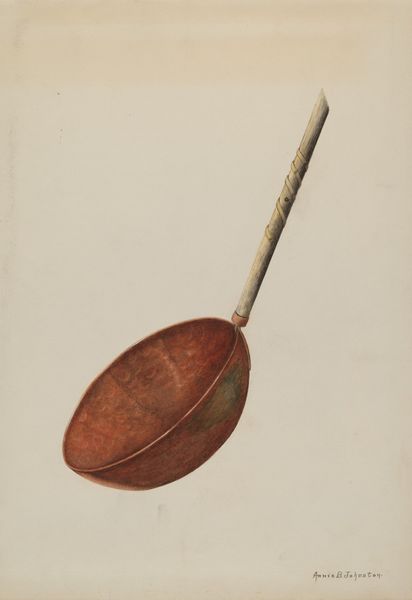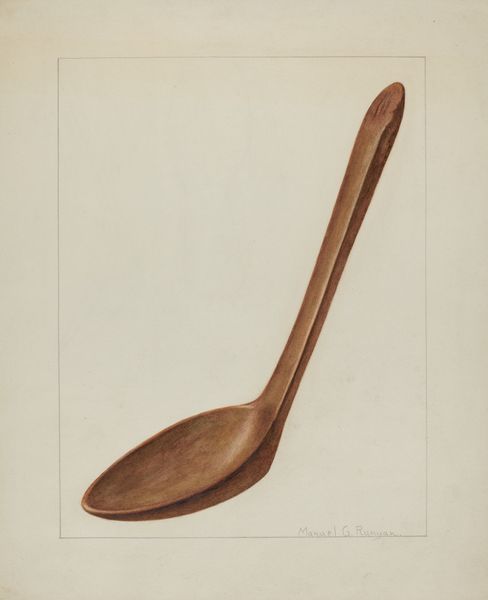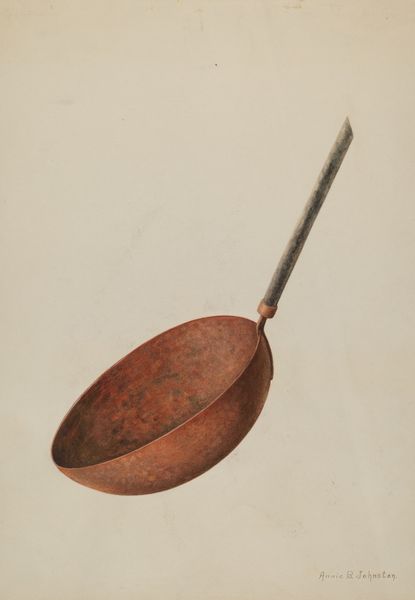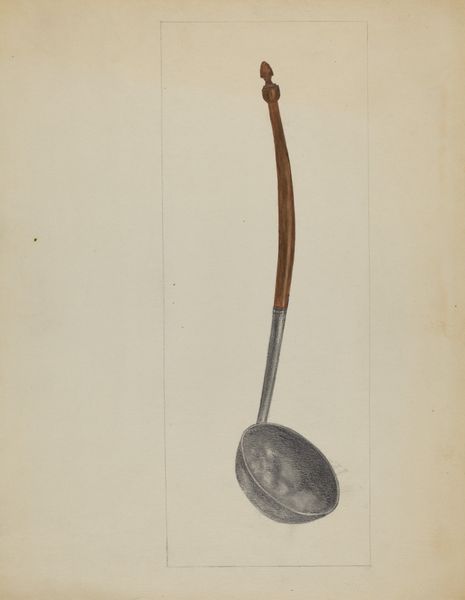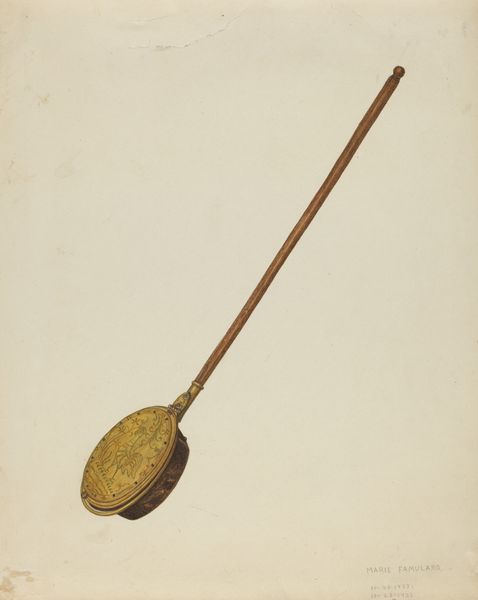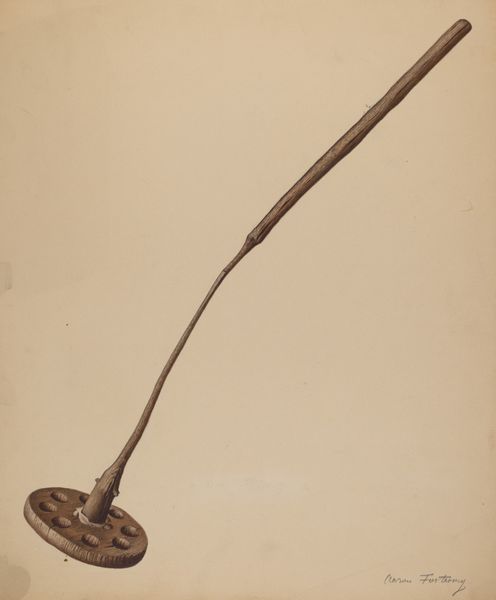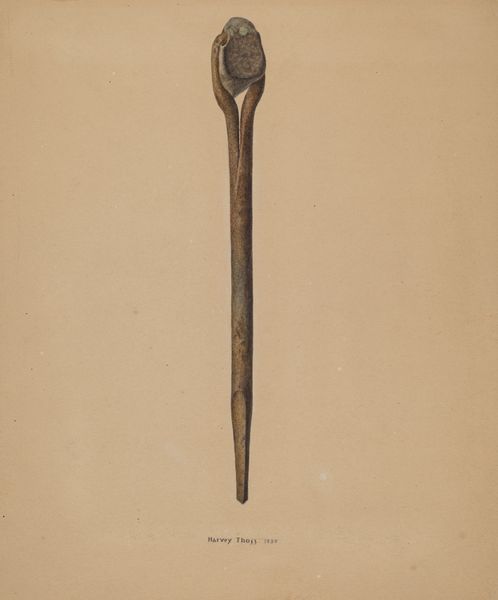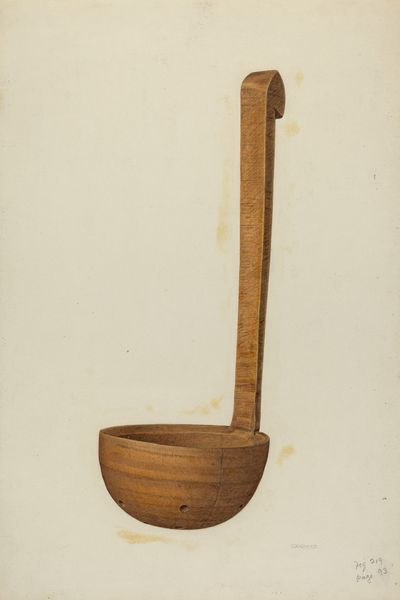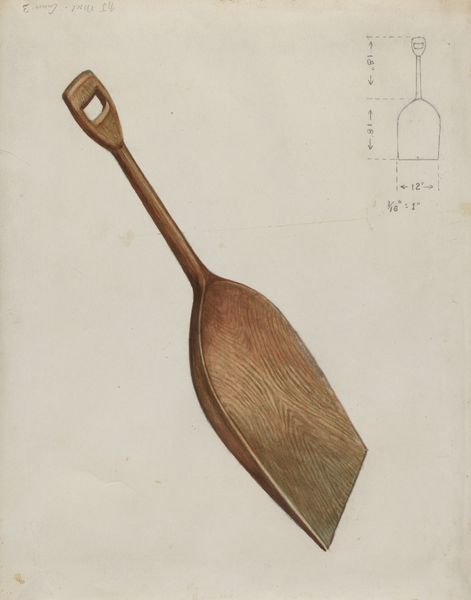
drawing
#
drawing
#
toned paper
#
charcoal drawing
#
possibly oil pastel
#
charcoal art
#
stoneware
#
watercolour illustration
#
tonal art
#
charcoal
#
positive shape
#
watercolor
Dimensions: overall: 28 x 22.9 cm (11 x 9 in.)
Copyright: National Gallery of Art: CC0 1.0
Editor: This is Jacob Gielens's "Wooden Dipper," created in 1938. It's rendered in watercolor and charcoal on paper, depicting a simple wooden ladle. It's the simplicity that strikes me. How do you interpret this work? Curator: What interests me is precisely that 'simplicity.' During the 1930s, a focus on everyday objects often symbolized a return to essential values amidst economic hardship. It's not just a dipper; it could represent sustenance, labor, and the dignity of common life. Considering that lens, what does the dipper 'hold' for you beyond its utilitarian function? Editor: That makes me think about who would have used it. Maybe it was a farming tool, connected to the land and a hard day's work? Curator: Exactly. Think about regionalism in American art during the Depression era – artists turning their attention to rural life. This dipper resonates with that impulse, almost acting as a quiet rebellion against the rapid industrialization that marginalized so many. Is there anything in its form or the way it's rendered that reinforces this reading? Editor: The elongated handle and its curve give it character and uniqueness, rather than being a perfectly manufactured object. Curator: Precisely. The imperfections, the hand-crafted feel, speaks to individuality and a rejection of mass production. It’s not just about aesthetic appeal, but about preserving the human touch. Editor: So, this humble dipper holds a larger narrative about the values of a specific time, place, and even a form of resistance. Curator: Yes! Seeing it as a historical object invites critical engagement with questions about labor, class, and cultural identity, especially as it exists within today's world. Editor: It's incredible how a seemingly simple drawing can open up such complex ideas! Curator: That is exactly what makes art so engaging, isn’t it? It helps us find the narrative in the ordinary.
Comments
No comments
Be the first to comment and join the conversation on the ultimate creative platform.
